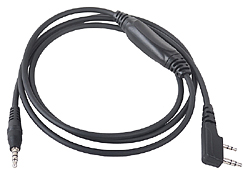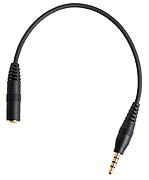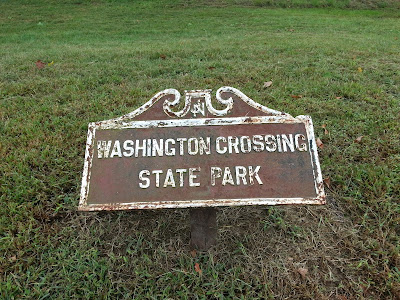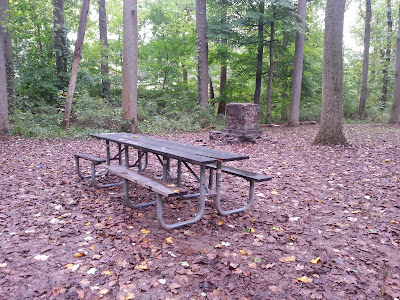Posts Tagged ‘amateurradio.com’
 This is not the wattage you’re looking for… move along
This is not the wattage you’re looking for… move along
Getting hot under the collector/base junction
My Elecraft W1 power meter has been absent from the antenna chain for a while due to a jumper cable shortage when I last reconfigured my shack. But now the W1 meter is back in the chain and it revealed something a bit worrisome about the 1Watter transceiver...
The Elecraft W1 power meter is a nice, inexpensive QRPp to QRO meter because it measures from 150 watts all the way down to 150mw.
 |
| Power meter in background showing 500mw by the end of the first QSO |
Heat is the enemy
The maximum power output available from a power transistor is closely linked to temperature, and above 25°C falls in a linear manner to zero power output as the maximum permissible temperature is reached.
But the real moral of the story is...
| Band conditions on the evening of this QSO |
So as I sat here wondering why my 1 watt radio was only producing a 1/2 watt now, I reminded myself that I was having extended QSOs using a (now) 500mw radio with other QRP operators (5w and 2w). I was also using my attic antenna, not some multi-element beam on a tower. Band conditions on 40m were also a limiting factor tonight (see snapshot at right).
But it's times like this with my 1Watter that keeps reminding me to lower my power and raise my expectations.
 Review – BTech APRS-K2 Cable (TRRS/APRS)
Review – BTech APRS-K2 Cable (TRRS/APRS)
by John ‘Miklor’

APRS-K2
It’s long overdue, but there’s finally a TRRS/APRS cable available for radios using a standard Kenwood style K2 connector.
I’ve been wanting to get involved with APRS for a while now, and this made it extremely easy.
APRS-K2 interface cable
The APRS-K2 cable allows you to interface your handheld transceiver with your existing mobile device, including. iPhone, iPad, and Android.
One end of the cable uses the Kenwood style K2 connector, while the opposite end is  terminated with a TRRS connector. Also included with the APRS-K2 is a Reverse Adapter to insure compatibility with all devices. This adapter allows cable to connect to earlier 3.5MM TRRS standards, such as Nokia.
terminated with a TRRS connector. Also included with the APRS-K2 is a Reverse Adapter to insure compatibility with all devices. This adapter allows cable to connect to earlier 3.5MM TRRS standards, such as Nokia.
App Driven
The APRS-K2 cable uses a virtual TNC found in several apps, such as APRSDroid, APRS.fi, and Pocket Packet. Plug in the cable, turn on the VOX, and you’re pretty much set to go.
Product Description
BTECH APRS-K2 TRRS / APRS Cable A simple way to start using APRS by using devices you already own. The BTECH APRS-K2 Cable will quickly connect your radio to APRS by using virtual TNC (app driven) on your tablet or device. The APRS-K2 cable is built with a custom circuit board that will automatically adjust the audio for clear packet transmissions with minimal adjustment; along with protecting your devices from strong over modulated signals.
Along with allowing APRS functionality the APRS-K2 cable can provide a simple interface gateway to allow several features to your radio!
Easily record radio conversations:
By connecting the APRS-K2 cable between your radio and any recording (line-in) device.
Use the APRS-K2 cable as a Mic In Connector:
Set up VOX on your radio to accept any form of incoming audio – such as a Push-to-talk application on a Phone – or a Line-out application from your computer.
Use the APRS-K2 cable to push transmissions over a speaker system:
Easily play audio over a intercom or speaker system from your handheld.
With a backup radio and your own ingenuity, the APRS-K2 cable can serve as an interface for a variety of applications for any amateur. Compatible with Kenwood K2 Accessory Slot Radios (such as BaoFeng, BTECH, Wouxun, TYT) Compatible with all phones, tablets, and computers with 3.5MM Audio In/Out Ports
Includes:
APRS-K2 Cable
Reverse Connector Adapter
Quick Start Guide
Conclusion:
The cable comes with a simple one page instruction sheet which should have you up and running in about 10 minutes after the appropriate app is loaded.
– Plug in the cable
– Set your handhelds volume control
– Turn on the VOX
– Set your handheld to 144.390 (US)
– Activate the app
That’s all it takes. If you’ve been considering building an APRS cable, you might find this an easy Plus and Play alternative.
The APRS-K2 can be ordered from Amazon, or if outside the US, you can go to their website and contact them directly. Baofeng Tech
Too many toys, too little time.
John ‘Miklor’ K3NXU
http://www.miklor.com
 Head Copying CW
Head Copying CW
There's more to using Morse Code than Learning Morse Code
Head Copying
How to practice for a ragchew
THIS IS COMMUNICATION with Morse Code and it is different than anything else we are familiar with so treat it as learning a new skill.
Next steps
After you've practiced with machine sent top 100 or top 500 words you'll still need time copying actual QSOs because more often than not, most operators you will communicate with have lousy spacing and run their words together or use so many abbreviations that you'll have to learn to hear the abbreviations as new words. When I work an operator who runs things together I'll first try to really exaggerate my word spacing during my exchange to give them a hint and if that doesn't work I ask them put more space between their words. Some will comply, but some folks just don't seem to know how to leave space so I'll catch what I can, politely respond to what I could understand and then move on.So if you're getting discouraged when you reach a wall of comprehension, try the steps above and with time I think you'll find your comprehension during a ragchew improving and it will take you to a new place in the hobby.
That's all for now
So lower your power and raise your expectations... and put extra space between your words!
73
Richard AA4OO
Update 11/7/2016:
KA8BMA pointed me to a nice reference created by W0XI for the top 100 "Ham Words" used in QSOs... check it out most common ham words  Matthew
Matthew
Earnest prayers that Matthew leaves you as un-battered and un-bruised as possible - AND that all your antennas stay up in the air.
Be safe; and have those batteries charged and those "Go Kits" locked and loaded!
And special prayers go out for our friends in the Carribean nations who are dealing with the aftermath.
72 de Larry W2LJ
QRP - When you care to send the very least!
 Matthew
Matthew
Earnest prayers that Matthew leaves you as un-battered and un-bruised as possible - AND that all your antennas stay up in the air.
Be safe; and have those batteries charged and those "Go Kits" locked and loaded!
And special prayers go out for our friends in the Carribean nations who are dealing with the aftermath.
72 de Larry W2LJ
QRP - When you care to send the very least!
 NPOTA success – WR03
NPOTA success – WR03
As stated a few days ago, the destination was WR03, the Delaware National Scenic River, via Washington's Crossing State Park, in Titusville, NJ. Thanks to the fact that there was hardly any traffic on an early Sunday morning, I arrived in about 45 minutes.
This is a re-creation of one of the "boats" that were in use during Colonial times to ferry people and supplies across the river. It's really not much more than a glorified raft. So the painting IS right. Washington stood ...... and do did everyone else!
 NPOTA success – WR03
NPOTA success – WR03
As stated a few days ago, the destination was WR03, the Delaware National Scenic River, via Washington's Crossing State Park, in Titusville, NJ. Thanks to the fact that there was hardly any traffic on an early Sunday morning, I arrived in about 45 minutes.
This is a re-creation of one of the "boats" that were in use during Colonial times to ferry people and supplies across the river. It's really not much more than a glorified raft. So the painting IS right. Washington stood ...... and do did everyone else!

























